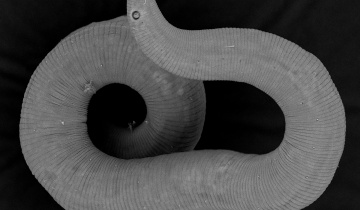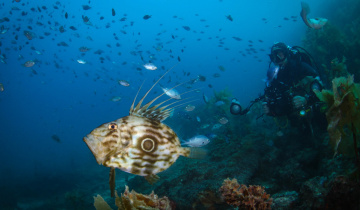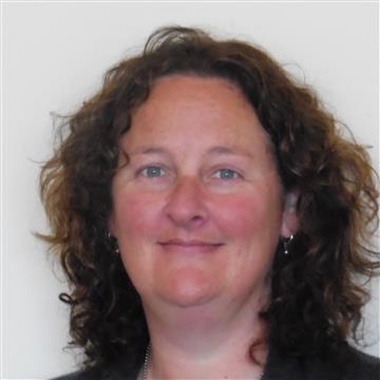The Gorgon’s Head - Gorgonocephalus
When you think brittle star, you probably imagine a small disc from which five slender simple arms radiate. Compare that to the amazing basket stars, which are brittle stars in the order Euryalida. Their five arms are divided many times resulting in as many as 5000 arm tips. They are also the largest brittle stars measuring up to 70 cm across. Basket stars generally live in the deep sea where they perch on top of rocky outcrops and expand their basket-shaped arms into the current to filter out the goodies it brings. When disturbed the arms curl up and the appearance changes from a bush to tight ball.
The largest group of basket stars are the Gorgon’s heads, Gorgonocephalus brittle stars which refers to the Greek "Gorgos" (Gorgon’s) and "-cephalus" (head) named for fearsome monsters such as Medusa, with snakes for hair whose gaze could turn people to stone.
A first glimpse of life forms from the deep sea...
Basket stars are intricately linked to the discovery of life in the deep oceans. In the mid-1800s, it was still believed that there was no life below around 600m depth (it was called the ‘azoic zone’). Scientists at that time had failed to register that British explorer Sir John Ross in 1818 had already (accidentally) hauled up a basket star (Gorgonocephalus caputmedusae) on a sounding line from more than 1600m depth while sounding the bottom of Baffin Bay in his attempt to find the North West passage.
This and a few other reports prompted the historic round-the-world trip of the HMS Challenger from 1872 to 1876 (which of course also visited New Zealand).
The authors Thurber et al. in a recent paper mention this species as the first species ever sampled from the deep sea while discussing the ecosystem function and services provided by the deep sea.
For more info, visit: https://niwa.co.nz/news-and-publications/blogs/Critteroftheweek/critter-...













































